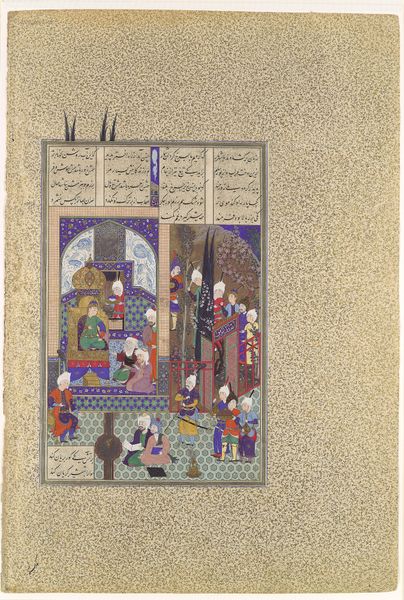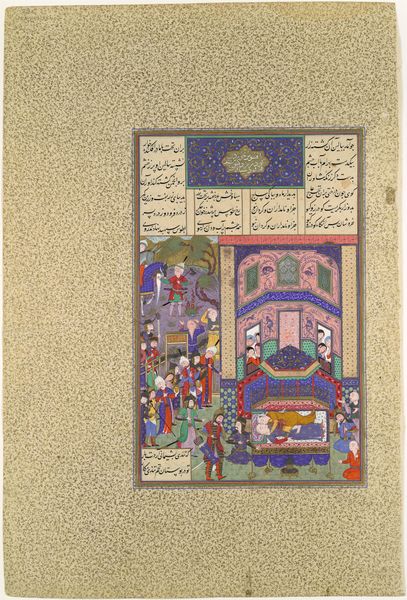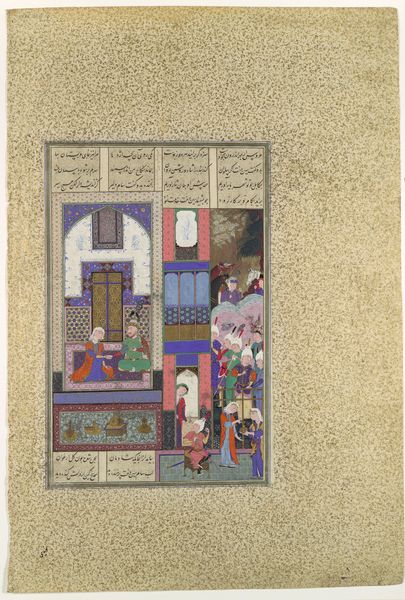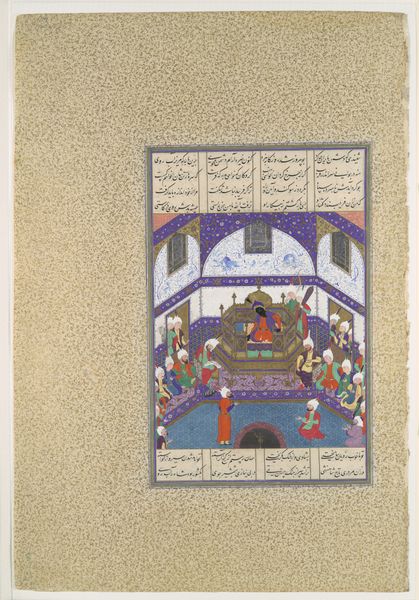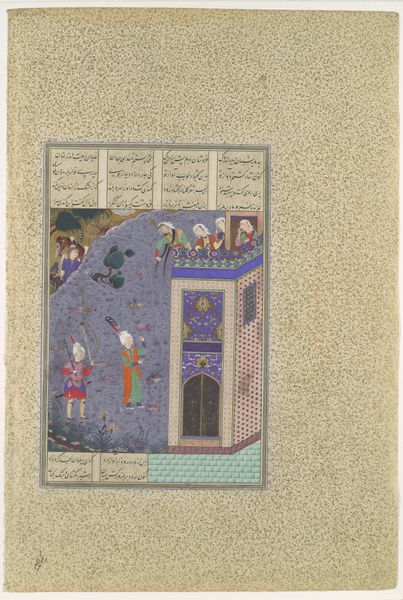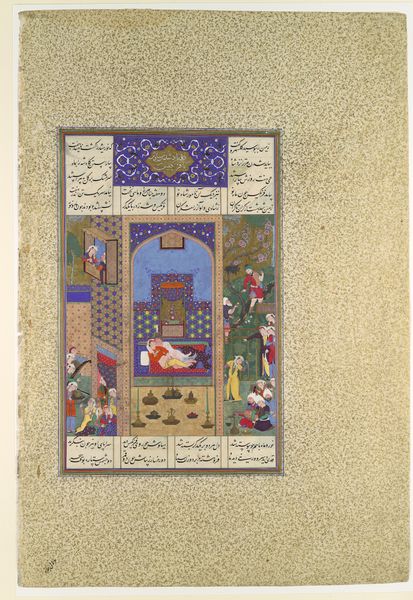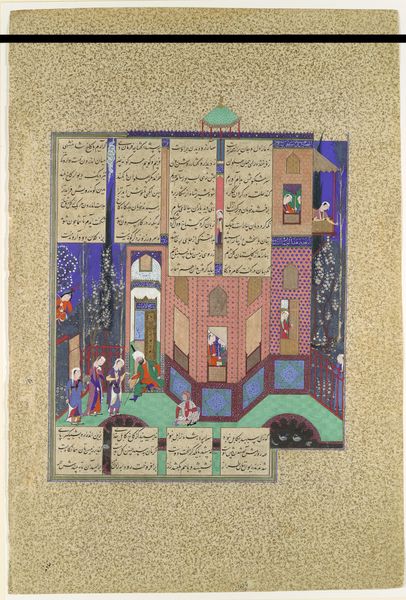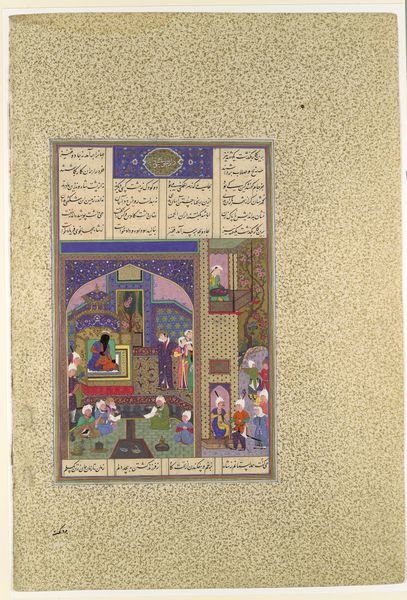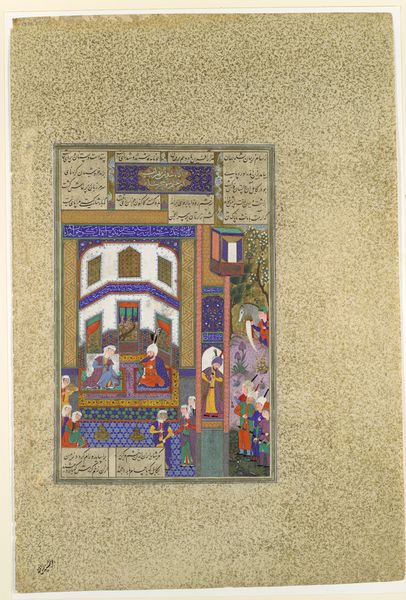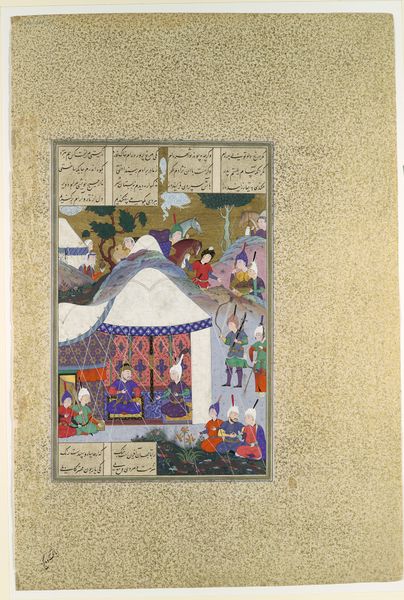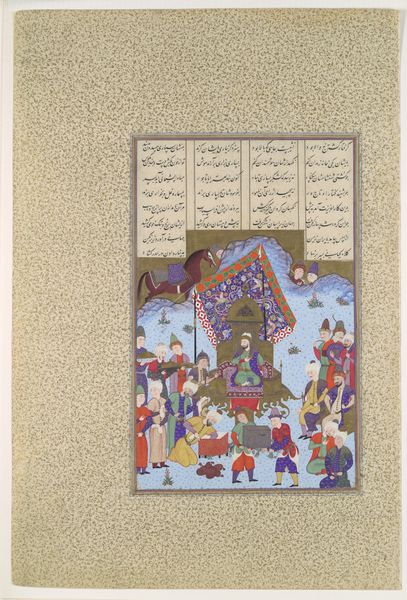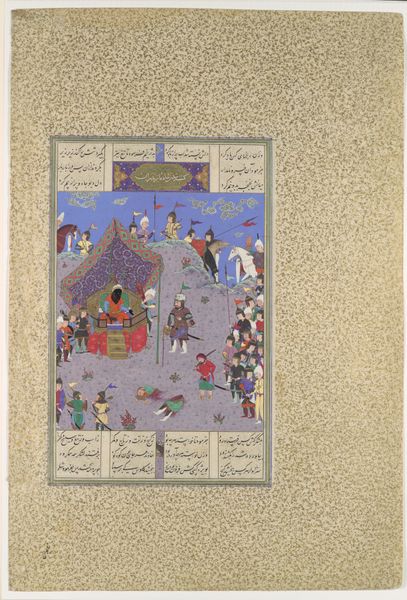
"Siyavush and Jarira Wedded", Folio 183v from the Shahnama (Book of Kings) of Abu'l Qasim Firdausi, commissioned by Shah Tahmasp 1500 - 1555
0:00
0:00
painting, watercolor
#
narrative-art
#
painting
#
watercolor
#
islamic-art
#
miniature
#
watercolor
Dimensions: Painting: H. 11 1/8 in. (28.3 cm) W. 8 9/16 in. (21.7 cm) Entire Page: H. 18 5/8 in. (47.3 cm) W. 12 5/8 in. (32.1 cm)
Copyright: Public Domain
Editor: Here we have "Siyavush and Jarira Wedded" from the Shahnama, made between 1500 and 1555. It's a vibrant watercolor miniature. The composition is so dense, packed with figures and architectural detail, but the perspective feels… unusual to my modern eyes. What do you see in this piece? Curator: Immediately, I’m struck by the materiality. Look at the pigments! These weren’t casually sourced. This manuscript was commissioned by Shah Tahmasp, right? The richness of the colours speaks volumes about the court’s wealth and the labor involved in creating these precious materials. Lapis lazuli for the blues, perhaps? And how would that have been acquired, traded, transported? Consider the social network that makes such a work possible. Editor: So it's less about the story being told, and more about what went into making it? Curator: Precisely. The narrative is secondary to understanding the means of production. Think about the workshops where this was created. Many hands, many levels of skill – from preparing the parchment to grinding pigments to the master illuminator. How does this system of artistic labour reflect the social hierarchy of the Safavid court? Editor: It's amazing to consider how many people were involved in this, and how their labor is embedded in the final product. Do you think that impacts the meaning for viewers then? Or now? Curator: It certainly should. By foregrounding the material reality, we challenge the idea of the solitary artistic genius and instead highlight the collaborative and often hierarchical nature of artistic production. This impacts our understanding of artistic agency, class, and value. Editor: I never really thought about art in this way before, thinking through materials, labor, and power. That completely changes how I’ll look at art going forward! Curator: Exactly. The material world offers a rich lens through which to view not just art, but society itself.
Comments
No comments
Be the first to comment and join the conversation on the ultimate creative platform.
